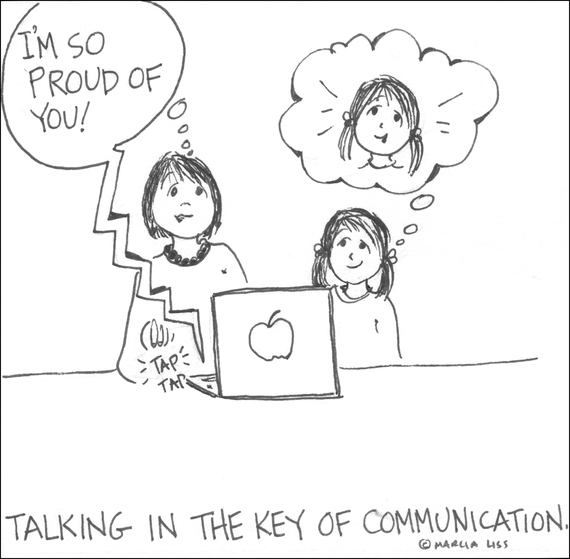Technology is opening doors for children with special needs. But have you ever tried talking using an iPad to communicate? I decided to have a two-way conversation with my granddaughter who has severe apraxia and it was a real eye opener. Instead of talking to her and then expecting her to use her TouchChat app to respond, I initiated the conversation using the program.
The Key of Communication by Marcia Liss
Wow! It took me forever to find the right icons to say, "Do you want a snack?" Telling her I was proud of something she had done was really challenging. I ended up "cheating" and typing most of the words before pressing the voice button.
How does it feel to be a child with so many thoughts and ideas and no way to communicate them quickly? If you ever wondered, take a look at the book The Reason I Jump written by Naoki Higashida, a 13-year-old non-verbal boy with autism. When I tried to talk through the iPad, I realized the world talks fast and moves even faster. My granddaughter already knows people don't wait for her answers.
There are old disability-awareness tricks to help people appreciate how hard it is to be blind or deaf. You can try to navigate your environment wearing a blindfold or earplugs. You can get a sense of how it feels to have auditory processing problems by playing loud static in the background when someone speaks to you. I recently participated in a hearing study where I had to adjust my hearing aids to accommodate for background noise. It was exhausting and frustrating.
But trying to express the ideas in my head using augmentative communication software was even more frustrating. Who we are is so bound up in our thoughts and ideas. As social beings, we are always searching for ways to share what we are thinking. So to have to keyboard them (very slowly for a child), knowing that by the time you are done the other person will have moved on, is truly sad and humbling.
I pray that my granddaughter and all of the other children struggling to find their voices will be liberated once they master all that technology has to offer them. Who knows...maybe someday there will be an app that reads their minds and expresses what they want to say as quickly as our minds do now. In the meantime, the best gift to give these children is the patience to wait for their words to emerge.
I invite you to join my Facebook community and subscribe to my monthly newsletter.
An earlier version of this post originally appeared on ChicagoNow, November 20, 2013.

